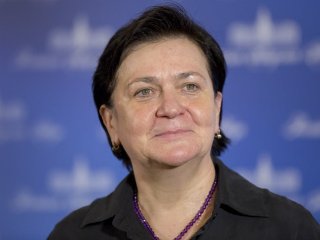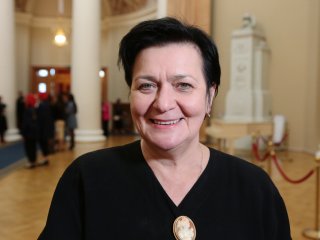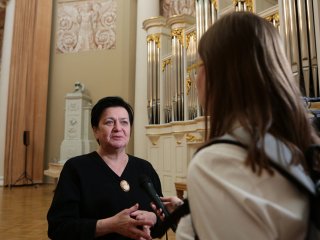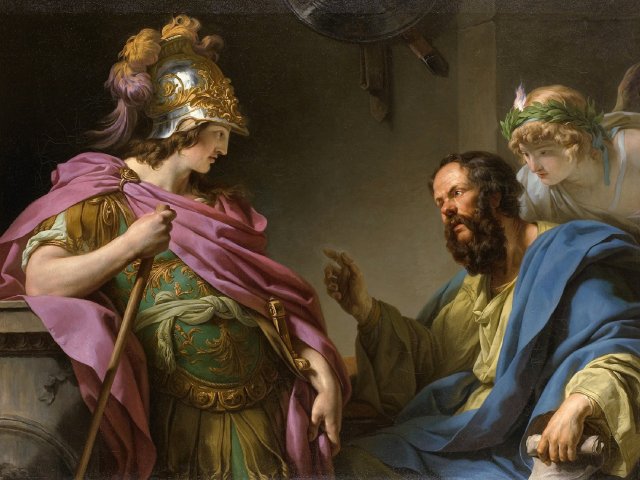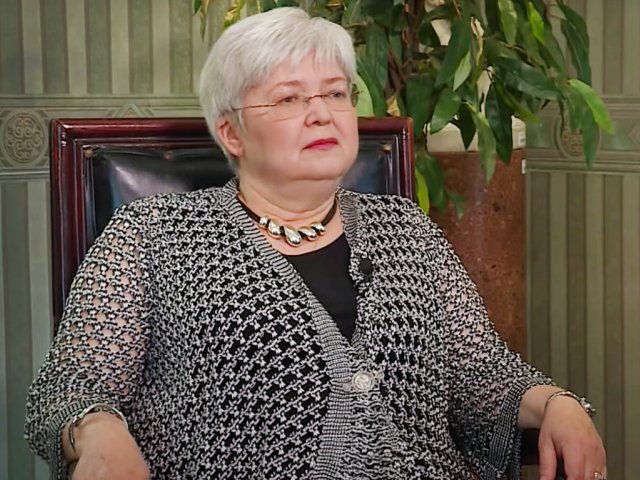Irina Fyodorovna Popova, Corresponding Member of the Russian Academy of Sciences, Director of the Institute of Oriental Manuscripts of the Russian Academy of Sciences, renowned sinologist, Doctor of Historical Sciences, will tell us about the influence of Peter I on Oriental studies, the ties of the RAS with St. Petersburg, and research of Oriental manuscripts.
― In 2022, Russia celebrated the 350th anniversary of one of the most famous people in the Russian history, Peter the Great, whose name is usually associated with Western traditions. But what was Peter's attitude towards the East? What contribution did Peter the Great make to Oriental studies and our ties with Asia?
― Indeed, being a great reformer, Peter I is known primarily as a Westernist, a ruler who “cut a window to Europe” and strengthened the Russian Empire's position in the West. But if we analyze what Peter did in the last years of his life, we will see that the focus of his attention shifted to the East during the last decade. For instance, there was the First Kamchatka Expedition to explore the Asia-Pacific coast. Peter the Great's interest in scientific exploration of Siberia and expeditions to this region he initiated are widely known. The famous Persian Campaign is of no less interest. During it, the emperor was assisted by the remarkable orientalist D. K. Cantemir. The scientist translated Peter's decrees into the local peoples' languages in order to facilitate communication with them during the expedition. Also, Peter the Great was interested in trading with China. In 1719, he sent a large embassy to Beijing led by captain of the Preobrazhensky Regiment L. V. Izmailov.
Under Peter the Great, in 1716, the Koran was translated into Russian for the first time as “Al-Koran, or the Turkish Law.” By the emperor's decree, special schools were established and Oriental languages were taught there ― however, with mixed results, depending on the availability of foreign teachers. Moreover, by order of Peter the Great, the first map of the Caspian Sea was drawn up. For this accomplishment, among other things, the emperor was admitted to the French Academy of Sciences. But Peter's greatest brainchild in the field of the people's spiritual transformation was the Russian Academy of Sciences established in 1724. The corresponding decree was issued on February 8 (Gregorian calendar), and every year we celebrate Science Day on this date.
― In other words, we will celebrate the 300th anniversary of the RAS in a year.
— But of course! St. Petersburg was home to the Russian Academy of Sciences for more than two centuries. Only in 1936 they decided to relocate it to Moscow. The decision was justified, since it was more convenient to arrange work on many urgent tasks of that time, including the space project, in Moscow. Nevertheless, the Northern Capital still cherishes the old scientific school tradition that goes back to the Peter the Great's Academy of Sciences — it is alive primarily due to continuity: transfer of knowledge from teacher to student through competent academic mentoring, which, in my opinion, has been revived recently. The academic spirit still lives in St. Petersburg, and you can actually feel it. It needs to be preserved.
― Speaking of St. Petersburg, it is planned to make this city the main venue for celebrating the RAS anniversary. Do you support this choice?
— But of course! St. Petersburg was home to the Russian Academy of Sciences for more than two centuries. Only in 1936 they decided to relocate it to Moscow. The decision was justified, since it was more convenient to arrange work on many urgent tasks of that time, including the space project, in Moscow. Nevertheless, the Northern Capital still cherishes the old scientific school tradition that goes back to the Peter the Great's Academy of Sciences — it is alive primarily due to continuity: transfer of knowledge from teacher to student through competent academic mentoring, which, in my opinion, has been revived recently. The academic spirit still lives in St. Petersburg, and you can actually feel it. It needs to be preserved.
― I hope this effort will succeed! Let's talk about the institute you head. It holds the largest and most diverse collection of Oriental manuscripts in the post-Soviet space. Which manuscripts are you most proud of?
― We are proud of all our manuscripts. Our collection is unique, and it is a great honor and responsibility to keep such an invaluable cultural and scientific treasure.
Our institute was established in 1818 as the Asiatic Museum of the St. Petersburg Academy of Sciences. Reporting on the first year of his work, the first director of the museum, Christian Danilovich Frahn, described 140 thousand depository items. On the initiative of S. S. Uvarov, who headed the Academy of Sciences from 1818 to 1855, the collection of a relative of the great philosopher Jean-Baptiste-Louis-Jacques Rousseau was acquired for the museum. This purchase had a great influence on the history not only of the museum, but also of the entire Russian Oriental studies. This unique arabographic collection of 700 Persian, Turkic, and Arabic manuscripts made the Asiatic Museum comparable with the largest manuscript collections in Europe. As remarkable arabist I. Yu. Krachkovsky noted, due to Ch. D. Frehn's work, the Asiatic Museum spent only 20 years on the journey that took other Oriental studies centers at least 200 years.
Our collection has been growing further through the efforts of diplomats, statesmen, scientists and expedition leaders. Today it is the largest collection of manuscripts and old printed books in 65 living and ancient Oriental languages in the post-Soviet space. There are 150 thousand depository items in our collection, and their number is constantly growing thanks to the restoration efforts and constantly improving work of our librarians and accessioners. Our collection can be compared only with those kept at the National Library of France and the British Museum. There are simply no other counterparts neither in Europe nor in the East.
― Many orientalists were subjected to repression in the Soviet era. How did the institute survive this difficult period?
― Our science saw several periods of ups and downs. Perhaps the most striking events of the history of Russian Oriental studies happened in 1889-1915, when the St. Petersburg Academy of Sciences was headed by Grand Duke Konstantin Konstantinovich, who favored the exploration of the East greatly. He patronized Oriental studies and spared no expense on organizing scientific expeditions to the East. Under the “august president,” the Oriental studies school thrived, giving rise to such outstanding names as V. R. Rozen, S. F. Oldenburg, V. V. Bartold, I. Yu. Krachkovsky, etc. This prosperous period continued in the Soviet days ― until the early 1930s, when repressions were initiated in the country and many students of these orientalists suffered greatly.
The Soviet government quickly established relations with representatives of natural and exact sciences, pinning hopes to raise the country's economy on them. And the humanities were seen as part of the cultural revolution and ideology. Interaction with them required a lot of separate work, but the Bolsheviks did not show much flexibility in this matter. At the same time, the academy as a whole obtained a significantly higher status; in 1928-1929, it became directly subordinate to the government. Many orientalists became academicians, but then the infamous “Academic Trial,” inspired by the conflict between the Academy of Sciences and the country's leadership, was initiated. Many humanities scholars were repressed, mainly those from the Russian Language and Literature department. The Academy suffered a lot, but the cautious and very flexible policy of orientalist and permanent secretary of the USSR Academy of Sciences (1904-1929) S. F. Oldenburg made it possible to avoid much heavier losses.
Overall, Oriental studies suffered considerably due to the 1934-1937 repressions. Many outstanding scientists were persecuted: N. A. Nevsky, who was shot as a Japanese spy, B. B. Baradiyn ― one of the founders of Buryat academic science, and many others. Some Oriental studies schools were simply eliminated. The situation worsened with the beginning of World War II: 130 people worked at our institute on July 1, 1941, but only 27 were still alive after the most severe first winter of the siege. Few of them were evacuated to Tashkent, Kazan, Moscow. It was only after the end of World War II that the state turned its attention to Oriental studies again, and the next important stage in the development of our science happened in 1950s. It was surely necessitated by external political events: powerful state transformations took place in the Middle East, the People's Republic of China and the State of Israel appeared on the world map, and India got divided. The Soviet Union, a great power that bore the main burden of World War II, was eager to take part in these processes, which, of course, served as a powerful impetus for continuing to study the East.
― The East and the West are often opposed to each other in philosophical and cultural senses. At the same time, well-known orientalist A. M. Pyatigorsky said that there was actually no contradiction between East and West, that it existed only at the “middle and bottom” levels, while at the elite level, these cultures were the same. What do you think about opposing the East and the West?
― Being an outstanding philosopher and one of the brightest representatives of the Tartu-Moscow semiotic school, A. M. Pyatigorsky looked at this issue as an elite philosopher. Philosophers are in search of higher meanings, and, probably, both the East and the West see these meanings in a very similar way in terms of humanitarian and universal human values. However, from the viewpoint of culture and attitude to life, we, Easterners and Westerners, are different, and this is especially noticeable now, with the deeper establishment of liberal values, which, by the way, are alien to the East. I hope that Russia will survive the hardships and preserve its identity. We are absolutely unique and different from both the East and the West. I believe that instead of focusing on differences, it is necessary to treat each other flexibly and try to understand each other better. Among other things, it can be achieved through education. We, Russians, need knowledge about the East in order to understand our own cultural code. We have absorbed a lot from the Arab culture, from the culture of the Mongols, Turks. Now Russia is actively interacting with China, where life is viewed differently.
― Could you give an example?
― For instance, their attitude to the future. We are used to planning for the nearest future only, while China, a civilization with 5 thousand years of history, looks much further: they currently have a list of economic (and other) indicators to reach by 2050. I think that the Chinese experience of long-term planning would be very useful for us. It is also useful to think about what will happen not in 50 or 100, but in a thousand years, and the Easterners do think about it: how to preserve and multiply their cultural values instead of living for today. This is where we are radically different from the Eastern civilization.

